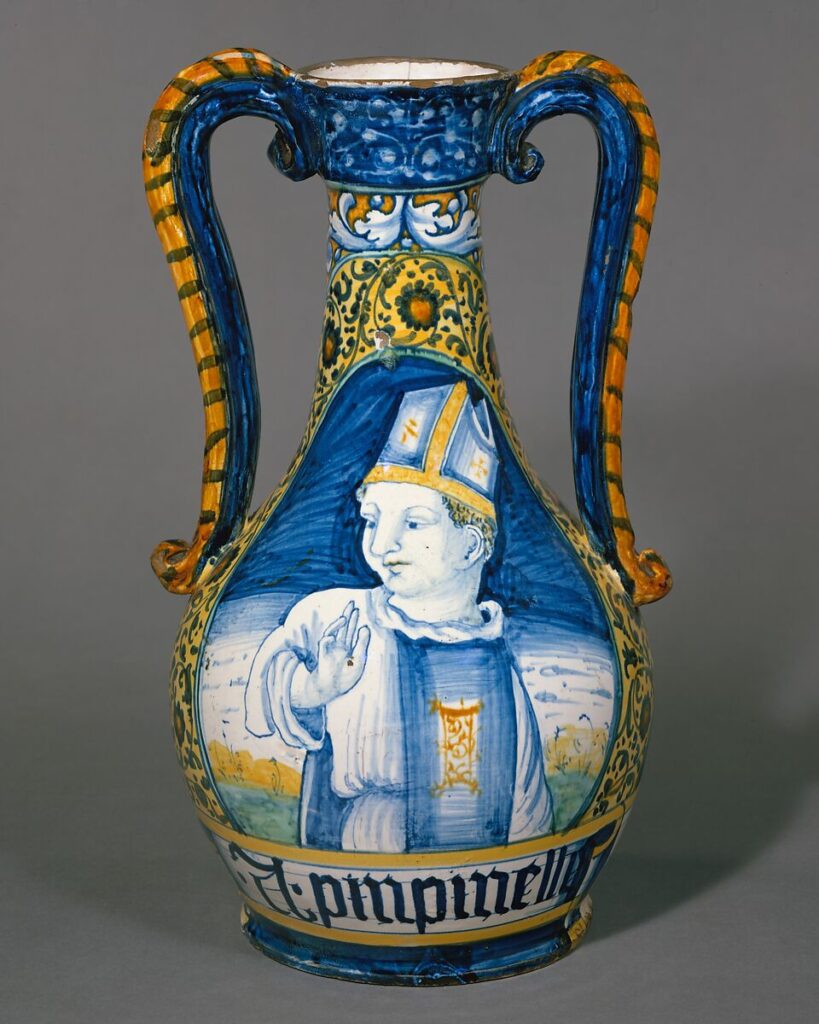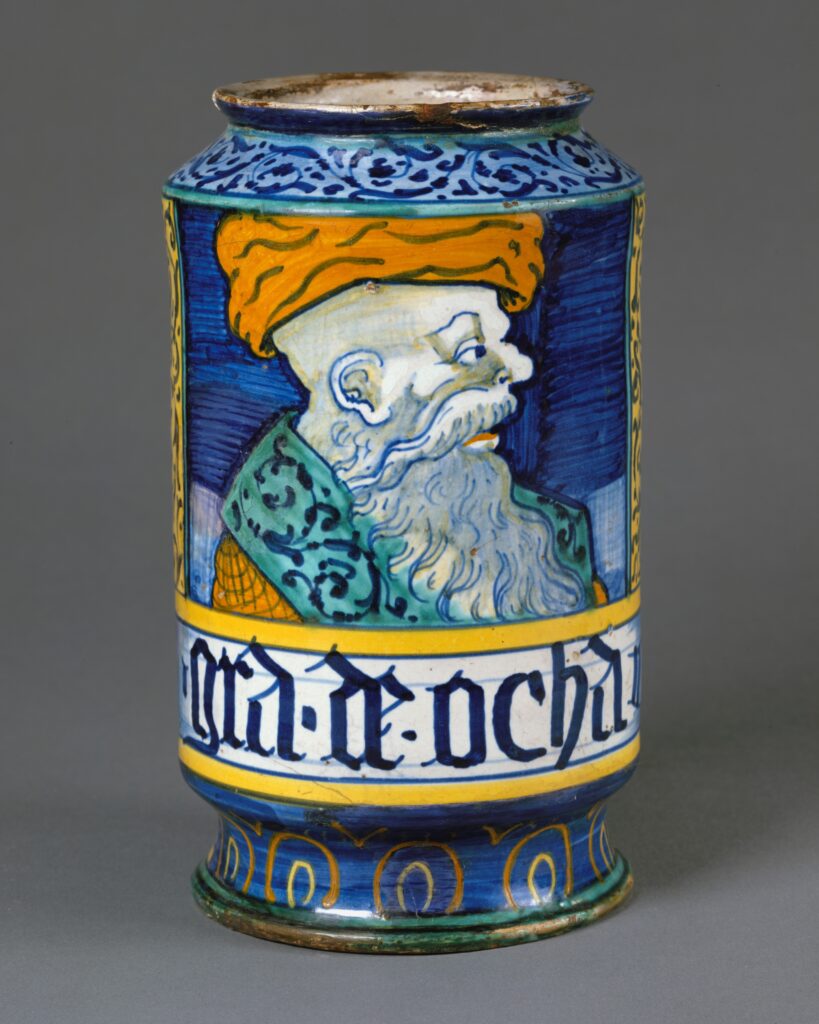Key Characteristics of Historical Maiolica Castelli
Majolica ceramics showcase a wide range of styles and techniques, with each family of potters bringing its own unique touch. Drawing inspiration from their rich histories and cultural traditions, families like the Pompei, Grue, and Gentili have developed distinctive characteristics in their ceramic artistry. Here are the defining features of their creations:
Orsini – Colonna
The Pompei family’s Orsini-Colonna style is known for its intricate ornamentation and vibrant colors, drawing inspiration from the Renaissance era. Bold hues of blue, green, and yellow, paired with elaborate floral patterns, adorn a variety of ceramic pieces, including plates, bowls, and urns. Their large decorative vases and urns, highly sought after by collectors, stand out for their size and detailed craftsmanship, often serving as striking centerpieces in grand spaces or affluent homes.


Le Turchine
Le Turchine" is defined by its departure from vibrant polychrome designs to a refined cobalt blue glaze. This style features a glossy, opaque enamel adorned with delicate white and gold motifs applied during a third firing. Inspired by the aesthetics of glass and metalwork, its intricate patterns—like slender volutes and the iconic four-petal rosette—create an elegant harmony of blue, white, and gold, imbuing the pieces with timeless sophistication.
Il Compendiario
The Compendiario style, which emerged around 1560 and flourished until the early 17th century, is defined by its simplified, graphic approach to decoration. Unlike the elaborate Orsini-Colonna style, Compendiario features sparse designs, often leaving large areas of monochromatic or white backgrounds. The reduced color palette, dominated by blue and yellow, highlights floral motifs, stylized leaves, tendrils, and sinuous vines. Central elements include symbolic figures, human forms, animals, and heraldic emblems. This style’s energetic and synthetic drawing techniques reflect a shift away from vivid colors toward a more minimalist and striking graphic aesthetic.


L’istoriato
The mid-17th century marked a new flourishing of Castelli production with the emergence of the istoriato style, which became pivotal in establishing the international reputation of Castelli majolica. Inspired by the istoriati of Faenza and Urbino, this style is characterized by intricate, hand-painted designs that bring stories and histories to life. Scenes depict troop gatherings, emperors’ triumphs, hunting expeditions, battles, judgments, mythical tales, saints, allegories, and even bestiary competitions. Blending traditional techniques with innovative methods, the artisans of Castelli transformed ceramics into storytelling masterpieces, cementing their place in artistic and cultural history.